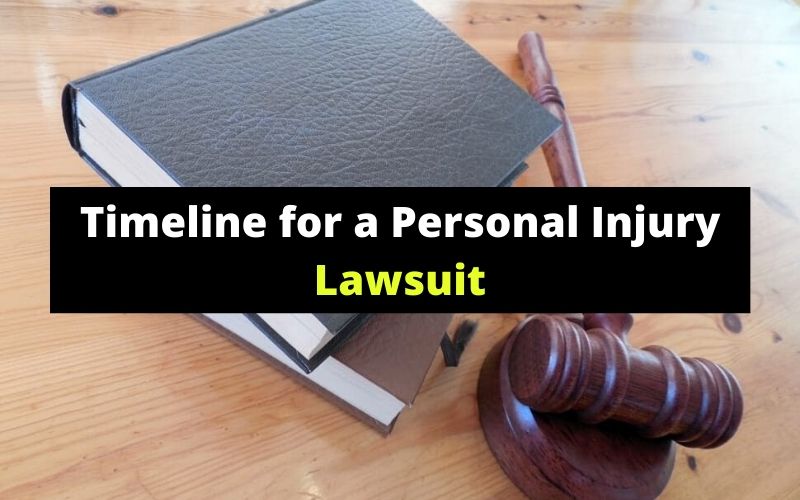
A Look at the Personal Injury Lawsuit Timeline
Almost 700 people die from falls in a single year. Another 48,000 are injured badly enough that they have to miss work.
That’s just slip and fall accidents. What about the 90 people who die each day from a car crash? Meanwhile, another 3 million are injured with 2 million experiencing permanent injuries.
Whether you slip and fall or find yourself in a car crash, personal injury cases are no joke. Before filing a lawsuit, however, it helps to prepare yourself.
Keep reading to learn everything you need to know about the personal injury lawsuit timeline. By learning more about the process, you can prepare for your injury lawsuit without missing an essential step.
Make your case by learning more about the personal injury lawsuit process today!
What to Do Following the Incident
Before you can go to trial and receive compensation, there are steps you need to take immediately following the incident.
Otherwise, you might lack the evidence you need to make your case.
Here are the steps you need to take before starting the personal injury lawsuit process.
1. Gather Evidence

One of the most important steps you can make is at the very beginning of your personal injury lawsuit timeline. Before anything else, you need to assess what happened and gather evidence.
Let’s say you experienced a slip and fall accident on someone’s property or at work. First, try to determine what caused the accident. Is there water on the floor, or maybe a wire you tripped over?
Try to determine what caused your accident. If you can, take photos of your surroundings as well. It’s important to take these photos immediately after your trip and fall.
That way, no one has the chance to change the scene.
If you were in a car accident, on the other hand, you’ll want to take photos of the property damage, any injuries you sustained, and the area. Take photos of cross streets, the cars involved, and any other evidence.
Did anyone witness the incident? Whether it was a trip and fall, crash, or another accident, witnesses can help. Ask if you can take down their contact information.
Your lawyer will contact the witnesses later on to take their official statement.
Any photos you take will help support your side of the story. Otherwise, you might not have adequate evidence to support your claim.
2. Visit a Doctor
Slip and fall accidents account for 1 million emergency room visits. Falls alone account for 8 million visits (the leading cause of visits to the emergency room).
Whether your injuries seem big or small, make sure to visit a doctor immediately following the incident. In the case of a car crash, you might not realize you’re injured until weeks later. Adrenaline can often cover up your pain and injuries.
Waiting too long to seek medical help could lead to a bigger injury or disability.
You also don’t want to give opposing counsel a reason to believe you’re faking your injuries. They might also argue that you sustained your injuries after the incident. To counter that argument, you’ll need your doctor’s professional assessment.
3. Record What Happened
It’s normal for your mind to feel a little hazy in the days after the incident. Make sure to write down everything you remember while it’s still fresh.
Otherwise, keep your records in a safe place. You can keep copy records or file everything on your phone.
4. File a Report

Take the time to file an official report regarding the accident. If you were in a car accident, you’ll need to call the police at the scene. In many states, filing a police report is required by law.
If you were in a slip and fall at work, make sure to let your supervisor know.
For accidents at another property, file the report with a manager or property owner.
Filing an official report and having someone else make a record is an important component of your case.
5. Contact a Lawyer
Don’t forget to hire an experienced personal injury lawyer. Make sure they specialize in your specific type of case. Their prior experience will help strengthen your case and ensure you receive compensation.
Finding the right team of personal injury attorneys could make all the difference as you complete the rest of the personal injury lawsuit process.
The Personal Injury Lawsuit Process

What are the steps in a personal injury lawsuit? Here’s an overview of what’s involved throughout the personal injury lawsuit process. By understanding more about these steps, you can prepare yourself for the road ahead.
Filing the Complaint
First, your lawyer will file an official complaint or summons that documents the nature of your claim. Some states have different processes involved.
The complaint should mention all parties involved, a description of what happened, and what you want from the party you’re holding responsible.
Receiving a Response
After filing your complaint, you’ll have to wait for the defendant’s response. They’ll either admit or deny the allegation.
They can also argue that there isn’t enough information within the complaint to accent or deny blame.
Discovery
The next step in your personal injury lawsuit timeline is the discovery phase. Both parties will gather evidence, complete interrogatories, and make requests for any necessary documents.
This process can take a few months or even a few years.
Pre-Trial
Pre-trial motions can include dismissing, compelling, or filing for summary judgment.
If one party thinks there aren’t enough facts to support a claim or defense, they can file for summary judgment. When
granted, this judgment is final.
Resolution Without a Trial
In some cases, you might undergo meditation to resolve your lawsuit without going to trial. You can arrange for meditation privately or have a judge assigned to conduct the meditation.
Going to Trial
If you decide to go to trial, you’ll take your evidence before a judge. The duration of the trial can last between two to five days. In some cases, it can last longer depending on the judge.
To prove your case, you’ll need to show evidence of liability. Your evidence needs to prove that the other party is legally responsible for your injuries.
The defense might argue your own carelessness contributed to the accident. It all depends on the evidence you gathered before and after filing your claim.

Your Personal Injury Lawsuit Timeline: Understanding the Lawsuit Process
Make your case! Now that you know more about the personal injury lawsuit timeline, you can prepare yourself for the road ahead. Avoid missing a step to strengthen your claim with these tips.
Looking for more tips? Explore the Lifestyle section of the blog for helpful guides.




